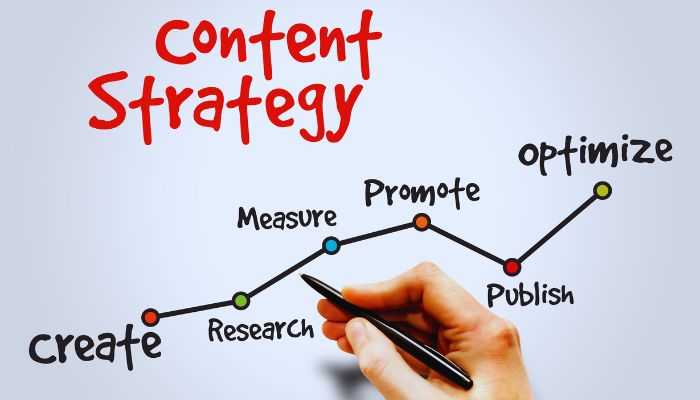Creating a consistent and organized content strategy is essential for building brand awareness and engaging with audiences across digital platforms. A well-planned content calendar helps achieve these goals by mapping out what, when, and where content will be posted. This guide explores the steps, tools, and tips for planning an effective content calendar that aligns with your brand’s objectives.
1. Introduction to Content Calendar Planning
What is a Content Calendar?
A content calendar is a planning tool that organizes all upcoming content for specific platforms over a defined period, such as weeks or months. This calendar outlines the topics, formats, and publishing dates for each piece of content, ensuring that marketing efforts remain consistent and aligned with brand goals.
Importance of Planning Content in Advance
Content calendar planning is essential for businesses seeking to deliver relevant and engaging content to their target audience. Planning in advance helps streamline the creation process, keeps teams on the same page, and prevents last-minute stress by establishing clear deadlines and expectations.
2. Benefits of a Content Calendar
Staying Consistent Across Channels
A well-planned content calendar helps maintain consistency across multiple digital channels, such as blogs, social media platforms, and email newsletters. By having a clear outline, brands can ensure that their voice, tone, and messaging remain cohesive, which builds trust and credibility with their audience.
Improving Organization and Workflow
Content calendars improve workflow by providing a clear structure for the planning, creation, and publishing processes. They allow marketers to schedule posts in advance, assign tasks, and ensure that content aligns with broader business initiatives.
Aligning Content with Business Goals
With a content calendar, businesses can plan content that supports their long-term goals, such as launching new products, building brand awareness, or promoting events. This structured approach ensures that all content aligns with overall business objectives and serves a purpose beyond filling the content schedule.

3. Key Elements of a Content Calendar
Types of Content to Include
A comprehensive content calendar should outline various types of content, such as blog posts, social media updates, email newsletters, videos, and seasonal campaigns. Including different formats keeps content diverse and appealing, ensuring that the brand reaches a broad audience.
Defining Audience and Goals for Each Piece
Each piece of content should have a defined audience and goal. For example, a blog post might aim to drive traffic to the website, while a social media post could focus on brand awareness. Knowing these specifics allows the team to create targeted, effective content that resonates with the intended audience.
Setting Deadlines and Assigning Responsibilities
Content calendars help assign clear deadlines and responsibilities to team members, keeping everyone accountable and ensuring that each piece of content is delivered on time. This structured approach also helps prevent overlapping tasks, making content production more efficient.
4. Steps for Creating a Content Calendar
Identifying Content Themes and Topics
The first step in content calendar planning is brainstorming themes and topics that align with the brand’s objectives. For instance, an educational blog could focus on “how-to” guides, while a fitness brand might feature health tips or workout routines. Establishing themes provides a cohesive direction for content development.
Choosing the Right Frequency for Posts
Consistency is key in content marketing, but it’s also essential to avoid overwhelming your audience. Based on audience preferences and engagement trends, decide on the frequency for each type of content. For example, blog posts could be published weekly, while social media posts might go out daily.
Planning Seasonal and Timely Content
Seasonal and timely content (such as holiday promotions or event-related posts) should be strategically placed within the content calendar. These pieces help brands stay relevant and align with current events, making the content feel timely and engaging.
5. Tools for Content Calendar Management
Recommended Tools
Several tools can help streamline content calendar planning, such as Trello, Asana, and Google Calendar. These tools provide a user-friendly interface for scheduling, tracking, and updating content plans. Additionally, many offer features like notifications and task assignment to keep teams organized.
Benefits of Using Content Management Software
Content management software, such as HubSpot or CoSchedule, integrates calendar planning with publishing and performance tracking. This integration saves time and provides a holistic view of content strategies across channels.
Integrating Analytics for Performance Tracking
Some tools allow for the integration of analytics, making it easier to measure the performance of each piece of content. Tracking metrics such as engagement, reach, and conversions can help refine future content and ensure that each post supports broader business goals.

6. Tips for Effective Content Calendar Planning
Balancing Variety with Consistency
While consistency is essential, it’s equally important to maintain variety in your content. Mixing up formats, such as blog posts, videos, and social media graphics, keeps your audience engaged. A content calendar helps balance these elements, ensuring that the content remains fresh and engaging.
Staying Flexible and Open to Adjustments
A content calendar is a guideline, not a rigid schedule. If trends change or an unexpected opportunity arises, adjust your calendar to stay relevant. Flexibility is key to making the most of real-time events and trends, allowing for spontaneous content when necessary.
Reviewing and Updating the Calendar Regularly
Regularly reviewing the content calendar helps identify what’s working and what needs improvement. Scheduling weekly or monthly check-ins allows teams to make adjustments, optimize content, and ensure that all pieces align with current objectives.
7. Conclusion
A content calendar is a vital tool for any successful content marketing strategy. By organizing content in advance, businesses can ensure consistency, improve workflow, and align content with their broader goals. With the right planning, tools, and flexibility, content calendar planning can drive long-term success, build brand awareness, and engage audiences effectively across channels. Embrace content calendar planning to create a cohesive, purposeful content strategy that consistently delivers value to your audience.




Thanks👍👍👍
Thanks .
သဲတပွင့်